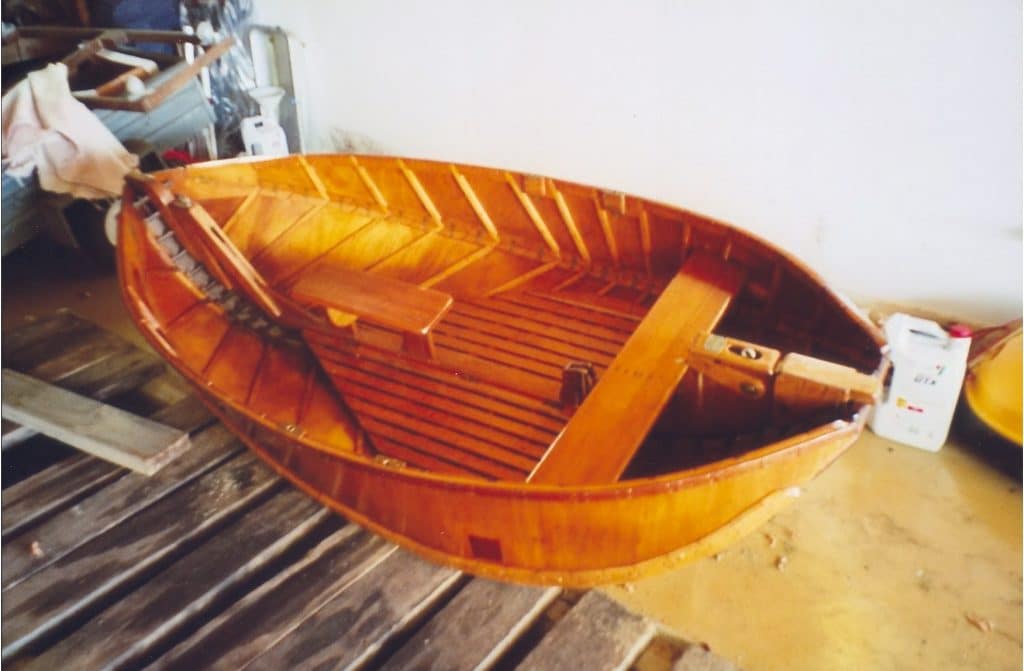 What you are looking at is cutting edge 1930s technology: a Hudson Folding Dinghy, an unusual collapsible dinghy designed and made by R J Hudson (Dick) between the late 1920s and late 1930s, originally in Dublin and then in Devon.
What you are looking at is cutting edge 1930s technology: a Hudson Folding Dinghy, an unusual collapsible dinghy designed and made by R J Hudson (Dick) between the late 1920s and late 1930s, originally in Dublin and then in Devon.
Dick worked as a civil engineer in India before returning to Ireland in the 1920s. During World War II he worked as part of a team on various development projects for the British government.
The boat was designed to be simple, with one person able to open and fold the boat in less than 30 seconds by means of a single lever, the thwarts automatically taking their position upon opening so requiring no fixing. Its strength of construction was obtained from a rigid longitudinal frame consisting of stem, keel and sternpost. Specially prepared sheets of marine plywood were used for the planking and the boat had no fragile parts that could be damaged when in use.
Overall stability was helped by the broad beam and the craft was marketed as being most suitable for fishing, duck shooting and capable of safely riding a heavy sea. It could be fitted out for rowing, sailing or powered by a small outboard motor. During the development phase the dinghy underwent trials in Dublin Bay to requirements suggested by the Admiralty and the Air Ministry, who saw the potential for military use in covert operations.
For transportation the dinghy folded to approximately 0.3m, ideal for stowing away on the deck of a small yacht or carried on brackets along the running board or on the roof of a car.
Main Frames: Silver spruce, Wych elm and Honduras mahogany. Main ties, hinge clips and pins all of phosphor bronze
Timbers: Silver spruce through copper fastened
Planking: Marine plywood panels of selected Canadian birch, specially prepared and treated to withstand tropical conditions and salt water.
Dimensions:
Type J:
OPEN: Length 2.7m
Beam 1.41m
Depth 0.5m,
FOLDED:
Length 3.2m
Beam 0.3m
Depth 0.5m
Weight 59kg


